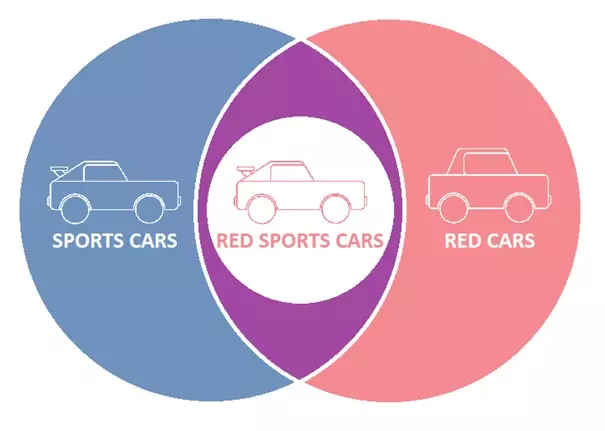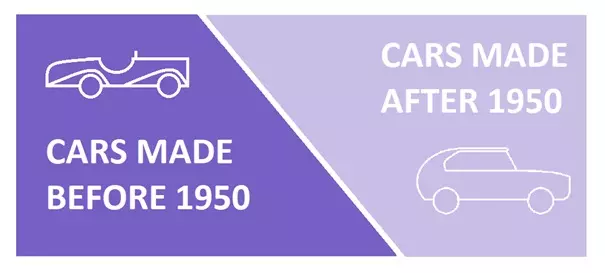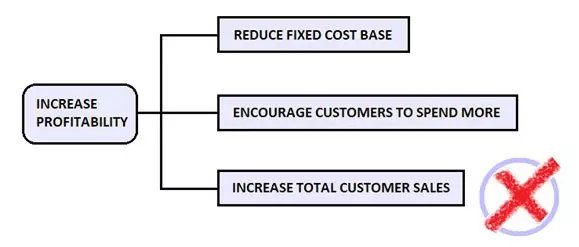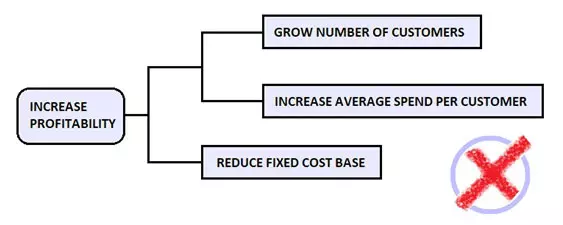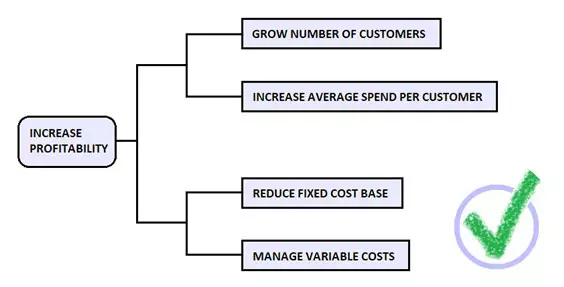The MECE principle is a problem solving tool used by McKinsey, BCG, and Bain consultants both to structure data analysis and to communicate effectively. It is a central pillar of consulting work and is discussed constantly in the industry. On any given day in an MBB office, a junior consultant will be asked by a partner "is this a MECE structure?"
The Problem Driven Structure approach to case studies we teach at MyConsultingCoach is derived from the way real consultants work and is fundamentally dependent upon making MECE divisions at every stage of analysis as you solve a problem. For every problem, then, we come up with a bespoke, MECE framework.
In terms of interview prep, then, it's hard to think of anything more important than making sure you understand and follow the MECE principle. Let's dive in and find out more about this data analysis framework!
How to Pronounce MECE
Before we go any further, newcomers should probably know how to pronounce this odd term "MECE". This is not actually so straightforward!
Whilst we can trace similar logical methods back for thousands of years, to Aristotle and similar ancient thinkers, the consulting MECE framework concept as we know it in the consulting world was invented by Baraba Minto of McKinsey and popularised in her book The Pyramid Principle. Minto insists that MECE's proper pronunciation is so as to rhyme with "niece". As she says of MECE, "I invented it, so I get to say how to pronounce it". However, in actual usage, you are vastly more likely to hear MECE pronounced "me-see" (this phenomenon of an inventor being the only one to pronounce their invention's name "correctly" is famously also seen with Steve Wilhite and the "gif").
What does MECE mean?
To get started, we should have a definition of MECE. A MECE framework segments a concept or a data set into subsets, in an exclusive and exhaustive manner. MECE is an acronym that stands for Mutually Exclusive (ME) and Collectively Exhaustive (CE).
- Mutually Exclusive: means that there is no overlap among subsets
- Collectively Exhaustive: means that every element of the set is included in a subset
When categorization is both Mutually Exclusive and Collectively Exhaustive, we can say that it is MECE. Confused by all this theory? We should take a look at some examples - we'll start with some "MECE for dummies" simple examples and proceed later to a more complex MECE case example. These will include MECE tree examples. Let's get started!
All the best resources in one place!
Our platform is unique in collecting everything you need to ace your interview in one convenient location, for a truly joined up experience. Sign upGetting to grips with MECE
The idea of generating MECE frameworks can seem pretty straightforward, but sometimes it can be rather harder to apply than you might think. To get started, let's look at a couple of simple examples to show how we might go wrong. Take the following:

Example 1: Classifying Cars
We classify cars into two groups:
- Red cars
- Sports cars
This grouping is clearly not MECE. A car can plainly be both red and a sports car (as every kid who dreams of driving a red Ferrari knows...). This classification thus fails on a simple test of Mutual Exclusivity (ME). To be mutually exclusive, the intersection between our two sets of red cars and sports cars would have to be empty. That would require the world to contain no red sports cars at all (a depressing prospect...). This classification is also not Collectively Exhaustive (CE): a blue hatchback is outside both categories.
A segmentation which would be MECE would be to divide cars into those made up to and after 1950:
Obviously, it is impossible for the same car to have been made both before and after 1950, so this categorization is mutually exclusive; it is also completely exhaustive, as any car has been made either before or after 1950.

Example 2: Student Sports
Now, let's say we classify students according to the sports they do in their spare time:
- Cricket
- Rugby
- Cross Country Running
This grouping is not MECE - most obviously because it is not collectively exhaustive. This is because students might be involved in any number of sports besides the three listed. A student who fences, swims, or plays football, for instance, would not fit into this categorization. Nor, for that matter, would a more bookish student who does not do any sports at all. In more formal terms, this means that there are elements not included in any of the defined sets.
As it happens, this categorization is also not mutually exclusive, as there is nothing to stop the same student from participating in more than one sport. Thus, some of the sets might have elements in common. Indeed, it is not impossible that some very athletic (and very busy) students, might play both cricket and rugby whilst also running cross country (how much time they have left to study is another question, of course...).
MECE Analysis
The MECE principle is so crucially important in tackling case studies because it is the fundamental guiding rule by which you should be structuring your entire analysis. Failing to ensure an entirely MECE framework throughout risks derailing your whole case.
Looking for an all-inclusive, peace of mind program?
Choose our mentoring programs to get access to all our resources, a customised study plan and a dedicated experienced MBB mentor Learn moreIf we are trying to establish the driver underlying a problem issue, we should create a MECE set of possible candidates. This means we know both that we cannot miss anything out and that we aren't going to get confused by identifying factors actually made up of multiple drivers. We'll see an example of this below, where we apply the MECE principle in a more complex business case. For now, we will learn a little more about how precisely we should go about making MECE segmentations for in a problem solving and/or data analysis framework.
Choosing a Segmentation Scheme
When we draw up our priority driven structure to help us analyse a case, we must segment the problem at multiple levels.
There will be multiple valid ways of breaking down the same problem. However, just because a segmentation scheme is valid, does not mean that it will be useful (for more on this topic, see our article on segmentation). Let's look at some points to consider to help you select a segmentation that works with your case.
Choose the right method
There are two general approaches to segmentation:
- When possible, try to break the problem down mathematically (a "mathematical segmentation"), as this automatically ensures a MECE framework. For example, Revenue = Average Price x Quantity
- Alternatively, simply subdivide the problem in a logical manner. For instance, you might segment into different revenue streams, different stages in the customer journey, different geographies, etc.
Chose the right segmentation drivers
There are generally multiple different valid ways to segment a problem. For example, you might choose to segment a human population by age group or income level (amongst many other possible drivers). Both will generate MECE frameworks. However, if we are trying to sell speedboats, income level will be the more salient segmentation to make, as not many people will be able to afford our product. If we are trying to sell diapers, then age group is a more useful segmentation, as we will want to target young parents. Of course, whichever you chose, the segmentation must be completely MECE at every individual level. Otherwise, your structure will not function properly and you will put your whole data analysis at risk.
Work "big to small"
You will progressively add levels to your structure; each time breaking the buckets from the last level down further. This means that each MECE categorization will stem from the last, as you further break down sets into subsets. Thus, as you develop your segmentation, you should keep one eye to how each level feeds into the next.

Case example
Making sure that your structures stay MECE requires conscious effort and can be surprisingly tricky. The very simple, non-business case examples above - segmenting cars and hobbies - might have seemed rather too simple. Surely, you would never make this kind of basic mistake in real life in a business context? For the kinds of cases we deal with in consulting, MECE will be easier, right?
To show how easy it is to inadvertently break the MECE rule, let's have a look at how a candidate might try to segment a case to draw an issue tree where the client's problem is one of declining profits:
The set of potential actions to fix the issue of declining profitability is made up of:
- Increasing total customer sales
- Encouraging customers to spend more
- Reducing the fixed cost base
This segmentation looks well-thought-out and sophisticated. A pretty good way to segment the problem, right?
Wrong. In fact, this categorization fails on a basic test of mutual exclusivity, as the second point is actually a subset of the first one. Immediately, then, this is not a MECE framework. To see why, consider that total sales can be calculated via the following equation:
Total sales = number of customers x average sale per customer
Any increase in total sales, then, will inherently mean that we have increased the number of customers and/or the average sale value per customer. Thus, the first statement about increasing total sales already includes the idea of boosting the average sales value per customer. At the same time, increasing the average sales value per customer is the key driver of the second statement about encouraging customers to spend more. The result is that the two statements are not mutually exclusive.
Everything you need in one place
All the most up-to-date resources delivered as a MBA course Learn moreA mutually exclusive version could be created by re-organising the three statements into two layers:
-
Boosting revenue by:
- Increasing average spending per customer
- Growing number of customers
- Reducing the fixed cost base
Much better, right? Sort of, but not quite... The above is still not a MECE framework - this time because it fails to be collectively exhaustive. This is because the candidate has neglected the fact that costs are broken down into both fixed and variable portions. variable (you might want to refer to our article on costs here). As such, the above segmentation would be correct if and only if you had already assessed the variable cost base and concluded that no action was possible. Otherwise, you should adopt the correct MECE framework below:
-
Boosting revenue by:
- Increasing average spending per customer
- Growing number of customers
-
Acting on costs by:
- Reducing the fixed cost base
- Managing variable costs
Now we have arrived at a completely MECE, mathematical segmentation of the problem. Notice how the structure moves from big to small, as it takes the main issue and sequentially partitions it into progressively smaller parts. All in all, this is a great starting point to go on to crack the case! This problem example is clearly simple but it illustrates how to be MECE very well.

MECE Communication
So far, we have primarily been concerned with the MECE rule as it applies to the mechanics of cracking cases. However, as with many of the tools we teach, in consulting, MECE is fundamental, both in facilitating the nuts and bolts of analysis, as well as in communicating that analysis.
Avoid Redundancy
Have you ever been talking to someone who just goes around in circles and never gets to the point? Consultants find this incredibly frustrating. In the consulting world, every interaction should be structured and meaningful. This is doubly true in your interview, where you have to get through your case study under enormous time pressure, and must make your reasoning clear to be sure your interviewer can follow along.
MECE consulting communication makes sure that we cover all the points we need to (CE) without repeating ourselves (ME). To take a simple example, let's say you went for a three-day city break and you are telling a jealous friend all about it - you don't want to miss any details! A non-MECE way of doing this would be to just begin rattling off a scattergun list of experiences and activities - the same way an excited child might. This will inevitably lead you to leave something out and to repeat yourself. "The portrait gallery was really good, one evening I ate Mexican food, I took the riverboat tour, did I mention the portrait gallery? Oh yeah..."
Much better would be to structure the communication chronologically or by activity type (for example, museums, restaurants, relaxation, etc). This will allow you to list all your activities without repetition and without leaving anything out. "The first afternoon I went to the portrait gallery, that evening I ate at a Mexican place, the next morning I took the riverboat tour and then decided to visit the cathedral I saw on the bank."
Demonstrate a Consulting Mindset
It is essential that you keep your communication MECE right throughout your consulting interview - from asking clarificatory questions when you first receive your case prompt all the way through to delivering your final client recommendations in a properly structured fashion (see also, our articles on making recommendations and on the pyramid principle). Even outside the case study, in the fit component of your interview, keeping the MECE rule in mind will help to make sure the stories you tell about your achievements are structured in an efficient and compelling manner. Crucially, all of this helps to demonstrate that you have the correct mindset for consulting. Your interviewer should see that working in this way is natural for you.
Takeaway
We cannot overestimate the importance of the MECE rule in consulting generally and for your interview in particular. Having read this article, you should now have a solid grasp of the MECE idea and be ready to start applying it in case practice.
Having started with a MECE definition, we explored the MECE rule in principle and have seen how tricky it can be to stick to it in practice. We have also noted that in consulting MECE is just as important for communication as it is in problem analysis. In a consulting case interview, MECE will be crucial throughout, and ideally, we want to develop a thoroughly MECE mindset.
The video lessons in the MCC Academy go into all this material in even greater detail, as well as helping to integrate it with the other skills which you must bring to the table to excel in your interview and land your dream consulting job!
Find out more in our case interview course
Ditch outdated guides and misleading frameworks and join the MCC Academy, the first comprehensive case interview course that teaches you how consultants approach case studies.

